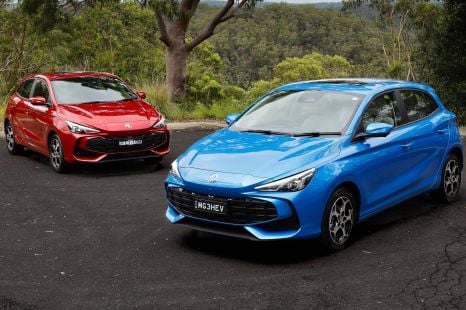

Andrew Maclean
3 Months Ago
The Kia Picanto GT’s spunky turbocharged three-pot and snazzy styling upgrades promise a fun drive, but the reality is different.
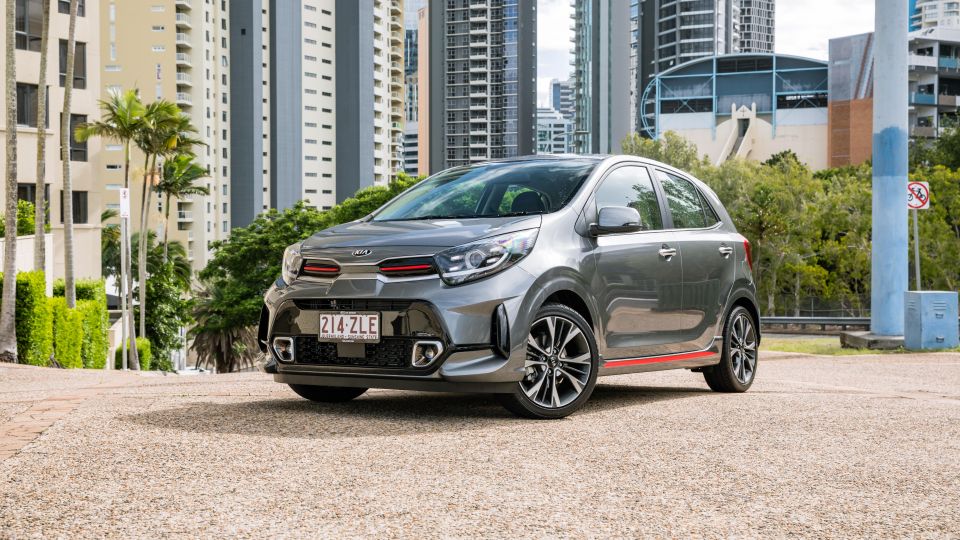
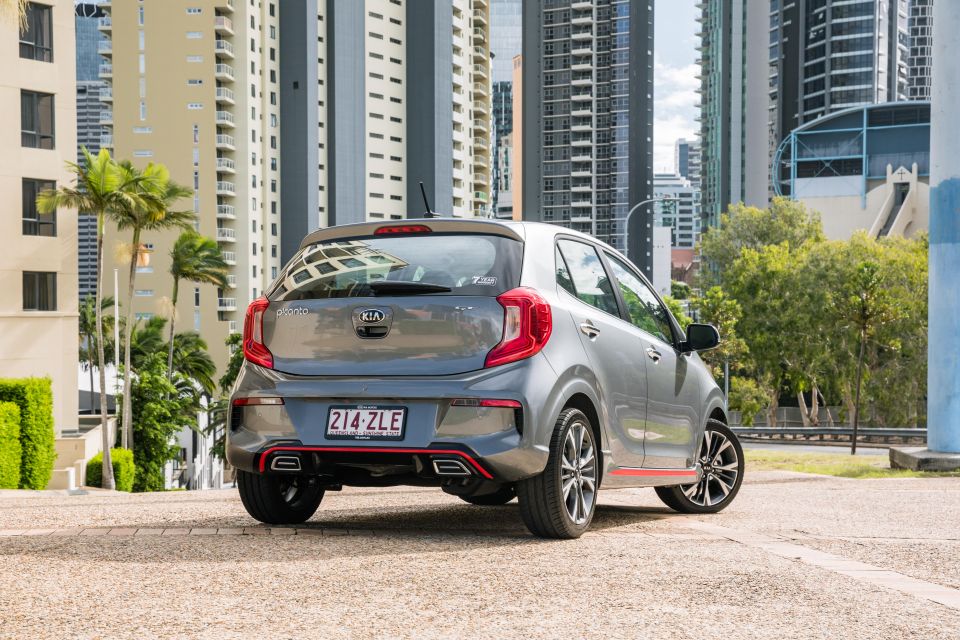

News Editor
New from
$14,690
excl. on-roads

News Editor
New from
$14,690
excl. on-roads


News Editor
New from
$14,690
excl. on-roads

News Editor
New from
$14,690
excl. on-roads
Quickly see how this car stacks up against its competition. Select any benchmark to see more details.
Take advantage of Australia's BIGGEST new car website to find a great deal on a Kia Picanto.
The first car I reviewed for CarExpert was a Kia Picanto S automatic, which I concluded was a competent if unexciting micro car and therefore an utterly sensible purchase.
This is no Picanto S, though. It’s the GT, which promises to be a little more special.
On paper, it seems to address the criticisms we’ve had of the S and GT-Line, dropping the four-speed automatic transmission and replacing the 1.25-litre four-cylinder engine for a peppy little turbocharged three-pot.

It’s still no rocket but there’s the familiar adage about how enjoyable it is to drive a slow car fast. With a 1012kg tare mass and a five-speed manual, the GT should be a fun little runabout.
Kia even uses the GT nameplate instead of GT-Line, suggesting something a little bit special – although Kia also offers a Picanto GT-Line, which adds many of the Picanto GT’s sporty visual enhancements but keeps the base engine.
With both models, Kia has done a good job enhancing the appearance of the Picanto.
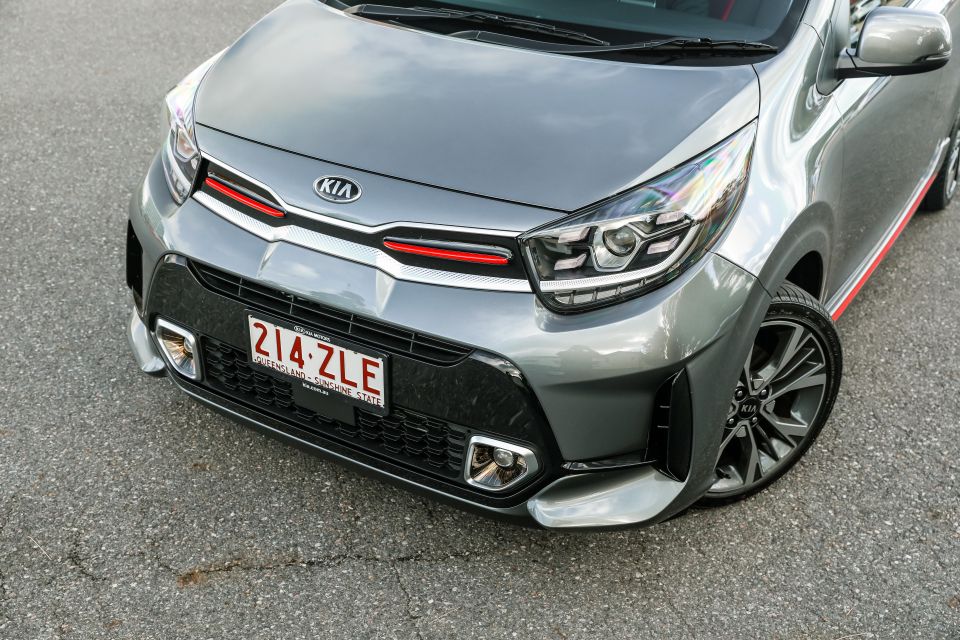
A facelift last year added new ‘ice cube’-style LED daytime-running lights, as well as new bumpers front and rear with gloss black accents and a restyled grille with attractive metal and red accents.
There are also larger, 16-inch alloy wheels instead of the base model’s 14-inch steel wheels with covers.
In all, this is a pretty snazzy looking micro car. Is it as fun as its looks?
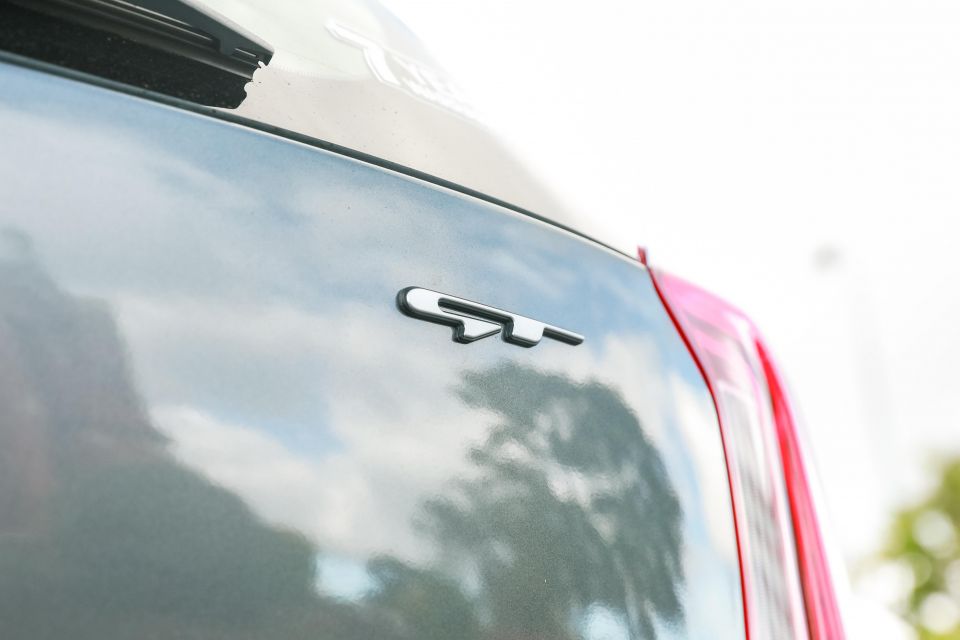
The 2021 Kia Picanto range opens up with the S manual at $15,190 before on-road costs, with the GT-Line manual ringing up at $16,640 before on-roads.
That means at $19,490 before on-roads, the GT on test here commands a $3300 premium for its more powerful engine and sports-tuned suspension.
Kia is currently offering the Picanto GT at $20,490 drive-away, $2000 more than the drive-away price of the GT-Line manual.
There’s no automatic version available in Australia, unlike the Rio GT-Line which pairs a seven-speed dual-clutch automatic with this engine.
The Picanto GT doesn’t have many rivals. Its arch-nemesis, the slower-selling Mitsubishi Mirage, lacks a sporty variant, while the Fiat 500’s spicier Abarth 595 sibling costs thousands more though offers more in the way of performance.
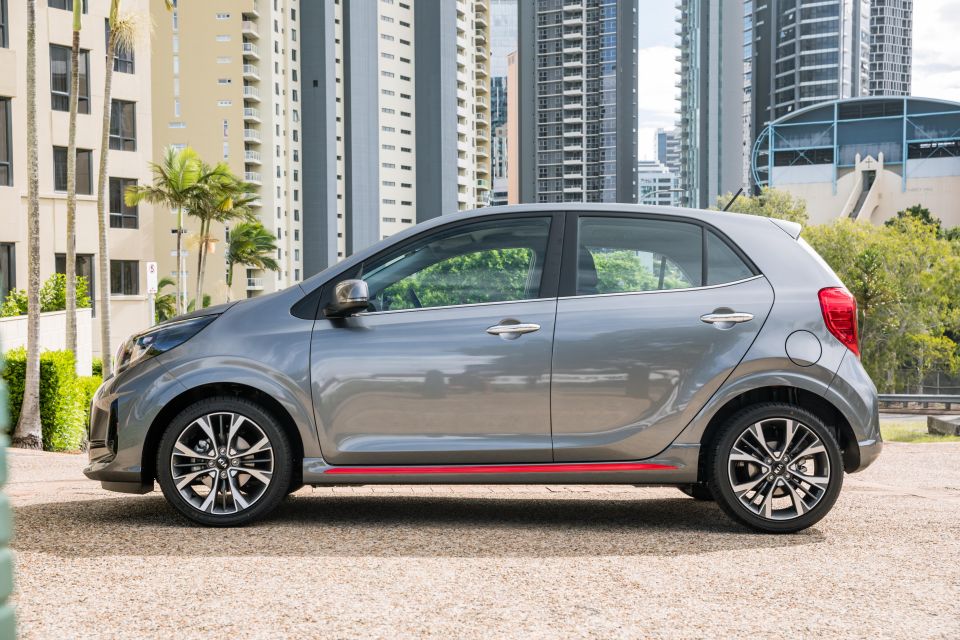
While many years ago $19,990 drive-away was the cost of entry into a base model small car, those days are long gone.
For $21,490 drive-away, you can get a mid-range Kia Rio Sport manual if you want something bigger.
If you’re after turbocharged three-cylinder power, $20,890 (before on-roads) gets you a Volkswagen Polo in punchier 85TSI Comfortline trim with 85kW/200Nm and a six-speed manual.
If the Picanto GT appeals to you because of its sporty styling and not its extra performance, you might be happy with a Fiat 500 Lounge at $19,250 before on-roads. You sacrifice plenty of power, torque and safety features, however.
While nothing at this end of the market offers the Picanto’s exact combination of micro car dimensions, sporty styling elements, turbocharged power and circa-$20,000 pricing, there are numerous rivals that offer at least two of those four items.
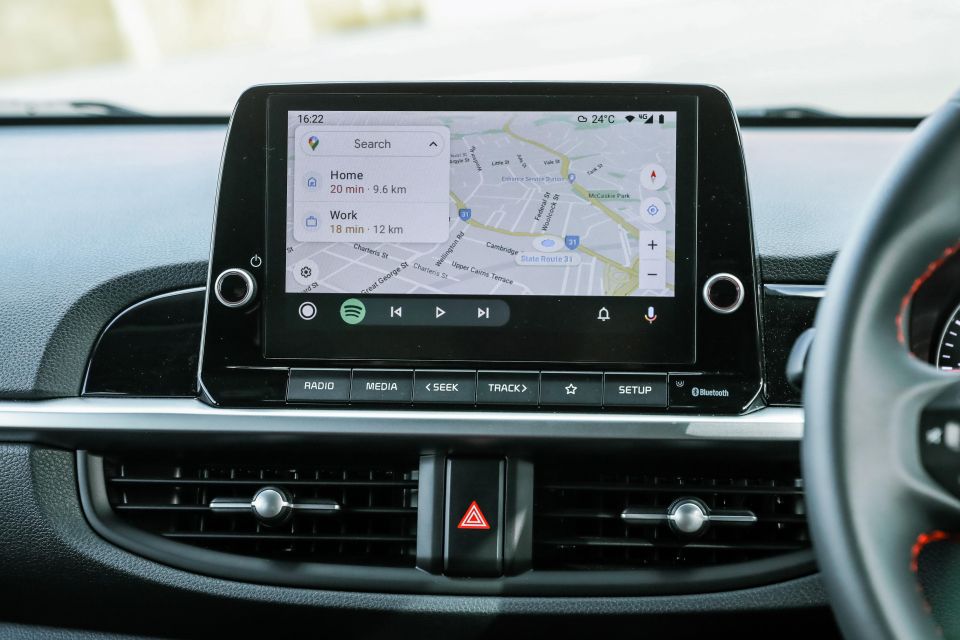
Other than the mechanical changes and slightly different exterior appearance package, the GT’s feature list is identical to the GT-Line’s.
Over the base Picanto, the GT-Line and GT both add 16-inch alloy wheels, power-folding exterior mirrors, LED daytime running lights, alloy sports pedals, and leatherette for the steering wheel, shifter and seating surfaces. There’s also a sliding front centre armrest.
All 2021 Kia Picanto models come standard with an 8.0-inch touchscreen infotainment system with wireless Apple CarPlay and Android Auto, as well as a reversing camera, rear parking sensors, automatic headlights, cruise control, remote central locking, air-conditioning, and power windows with auto up/down for the driver’s window.
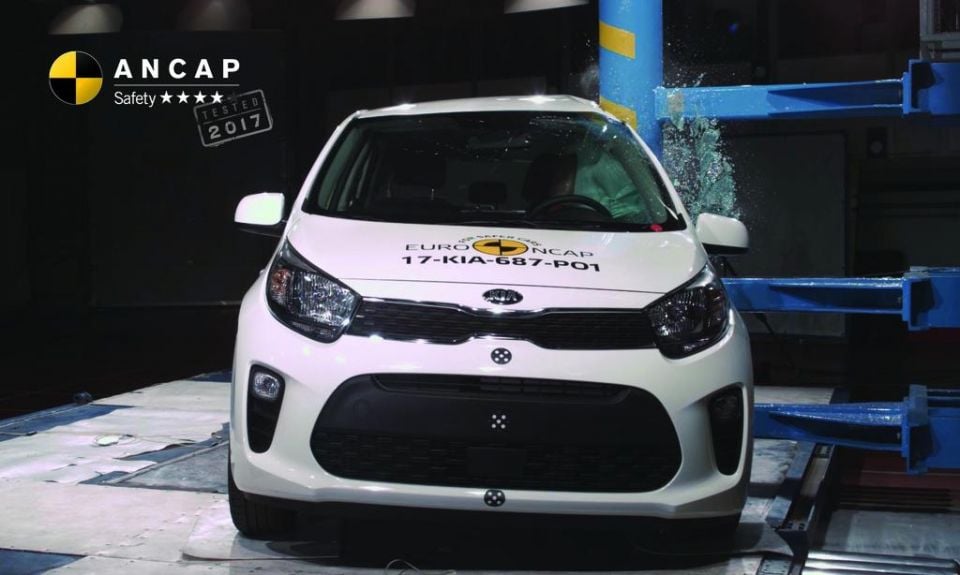
All versions of the Picanto wear a four-star ANCAP safety rating with a 2017 datestamp, based on crash testing conducted by Euro NCAP.
The Picanto scored 87 per cent for adult occupant protection, 64 per cent for child occupant protection, 54 per cent for pedestrian protection, and 47 per cent for safety assist.
Standard safety equipment includes six airbags (dual front, side and curtain) and autonomous emergency braking (urban and interurban) with forward collision warning.
Australia’s facelifted model unfortunately lacks the safety upgrades available in other markets, however, such as lane-keeping assist, blind-spot monitoring, and rear cross-traffic alert.
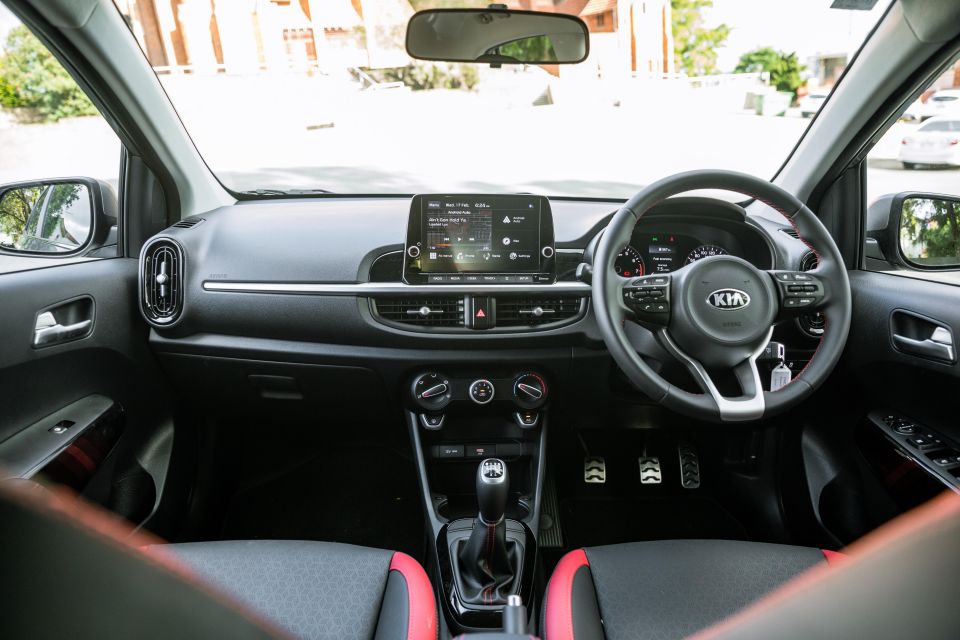
The Picanto has a well-packaged and straightforward interior that avoids looking chintzy.
Naturally, the dashboard and doors are covered in hard plastic but the colours are consistent, the plastics don’t have a tacky sheen, and everything is screwed together well. We observed no rattles during our time with the car.
With the GT-Line and GT trim levels, Kia has spruced up the interior a bit with red stitching elements on the steering wheel, shifter and rear bench, as well as red colouring on the front seat bolsters. The seats are also upholstered in what Kia refers to only as “premium” trim, but it’s a pleasantly soft leatherette upholstery with an attractive pattern.
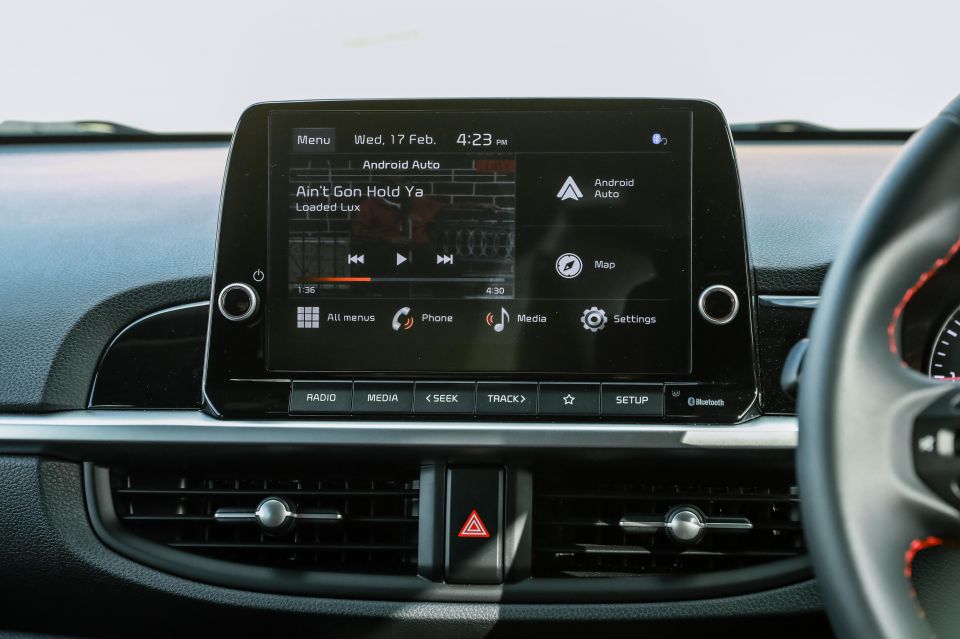
Atop the dashboard is an 8.0-inch touchscreen infotainment system which, in typical Kia fashion, has a straightforward interface and responds quickly to inputs.
While we’ve experienced issues with wireless smartphone mirroring in recent Kia products, we experienced only a single dropout during our time with the Picanto.
After you’ve initially paired your phone, connecting to Apple CarPlay or Android Auto is as simple as pressing a couple of buttons on the infotainment home screen each time you start the car.
It’ll ask you every time which device from the list you want to select, and selecting your most recent device will lead to a loading message that says it’s disconnecting a previous device even if you haven’t used that in days. Nevertheless, the pairing process only takes about 10 seconds and you won’t have to deal with a cable.
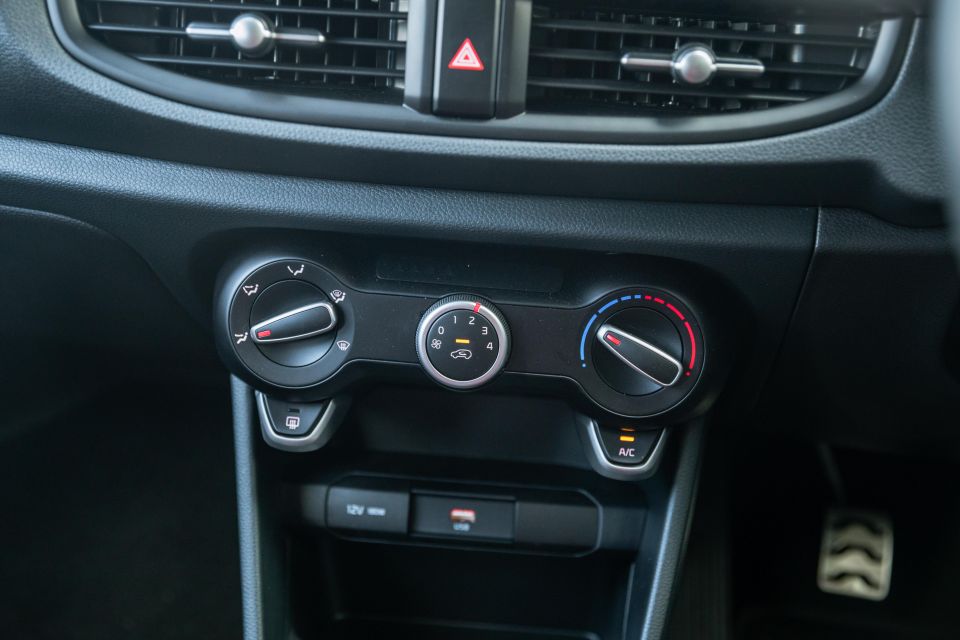
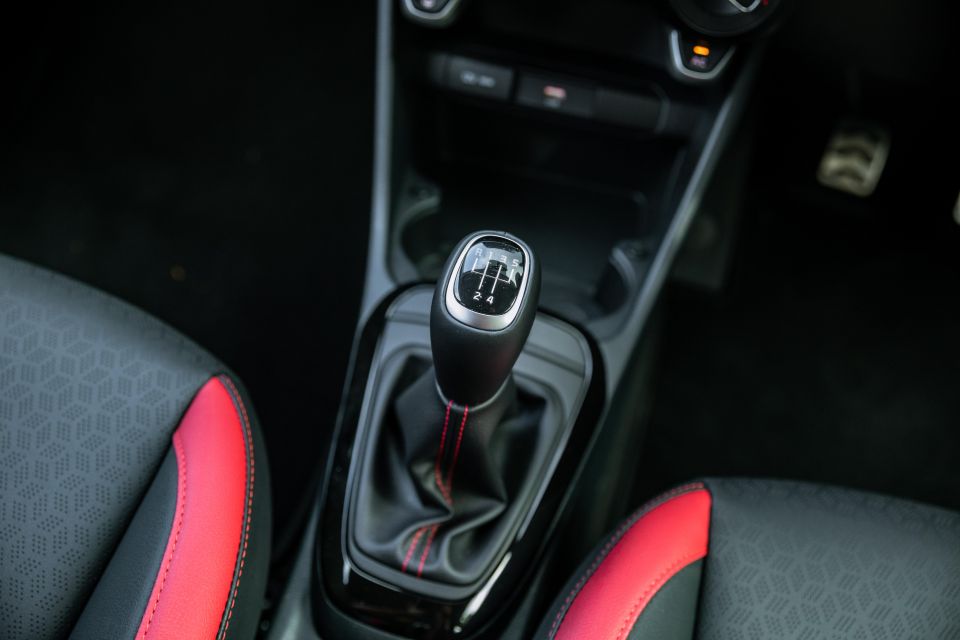
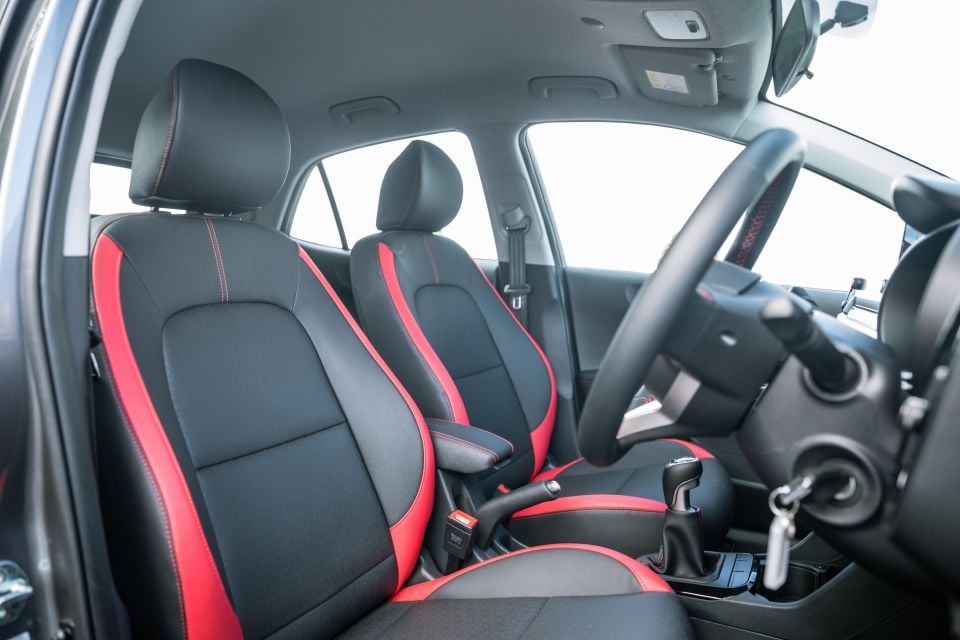
There’s a USB-A outlet at the base of the centre stack, below which sits a phone-sized tray. Contained within are two cupholders which pop out with the press of a button, allowing you to fold them away when you’re not using them. Neat.
There’s also a tray behind the shifter that you can fit a cup or bottle in, while behind that is a centre console bin that may be small but gives you some concealed storage space and somewhere to rest your elbow.
Surprisingly, this isn’t a given at the lower end of the market with the Toyota Yaris and the Picanto S lacking one. Finally, there are bottle holders in each front door that can fit a 1L bottle.
It was easy to get into a comfortable seating position, though the steering wheel only tilts and doesn’t telescope.
The instrument cluster is clear and legible and its 4.2-inch colour screen is an improvement over last year’s monochromatic number. While we’re delighted to see a digital speedometer, the colourful, strobing animation it has while you’re driving is distracting and pointless.
Adjusting the driver’s seat to a comfortable seating position for my height (180cm) and then moving to the back, I had an acceptable amount of leg and knee room and ample headroom despite the confining space it presents as.
The front seatbacks are also finished in soft, leather-look upholstery, something you won’t find on many more expensive Kia products, which makes it more hospitable if a front-seat occupant pushes their seat further back.

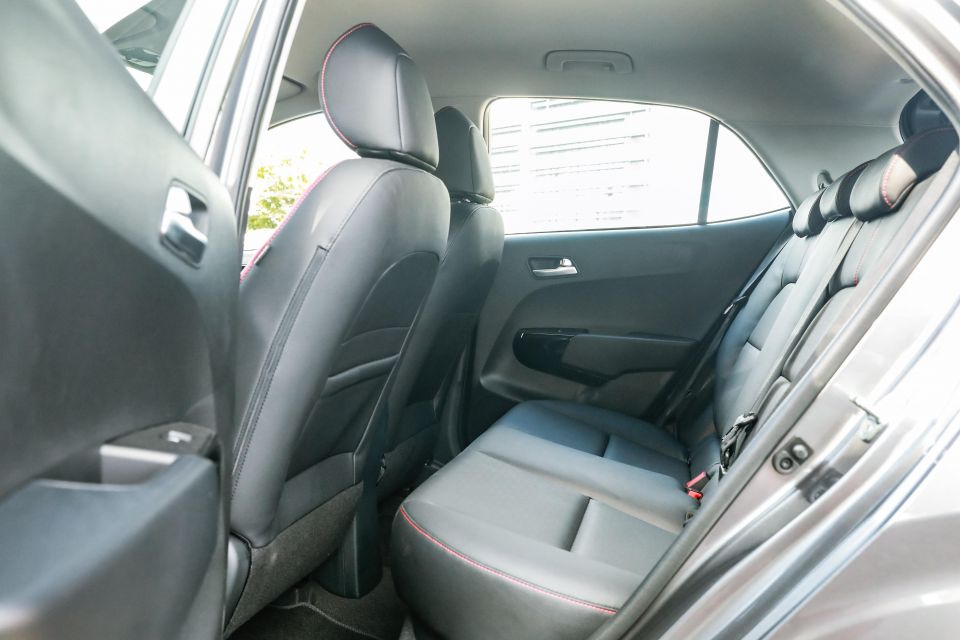
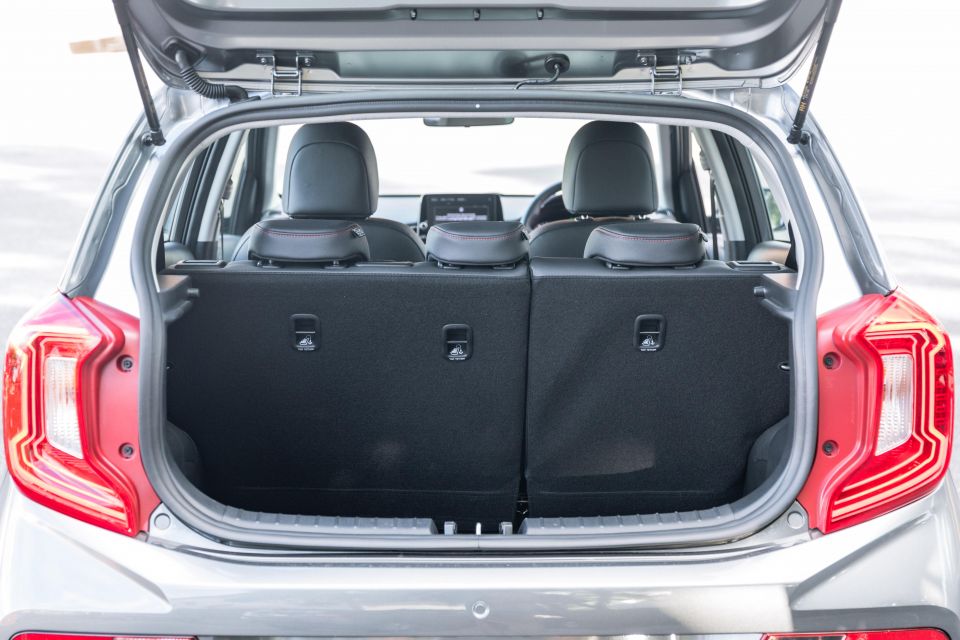
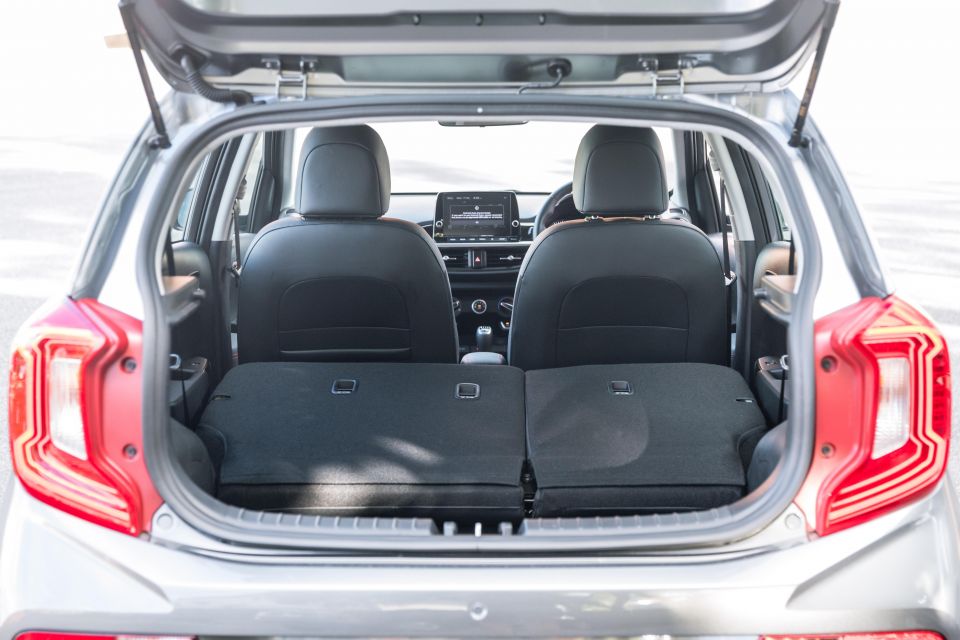
The front passenger seat has a map pocket behind it, though that’s it for storage.
You can forget about bottle holders, air vents, or power outlets back here, too. Oh, and don’t even try to squeeze someone in the centre seat.
You will find three top-tether and two ISOFIX child seat anchor points back here, however.
With the 60/40 split-fold rear seats up, boot volume is 255 litres. That’s enough to fit one large suitcase and perhaps a duffel bag wedged in there. For extra space, you can fold down the rear seats for a total volume of 1010 litres.
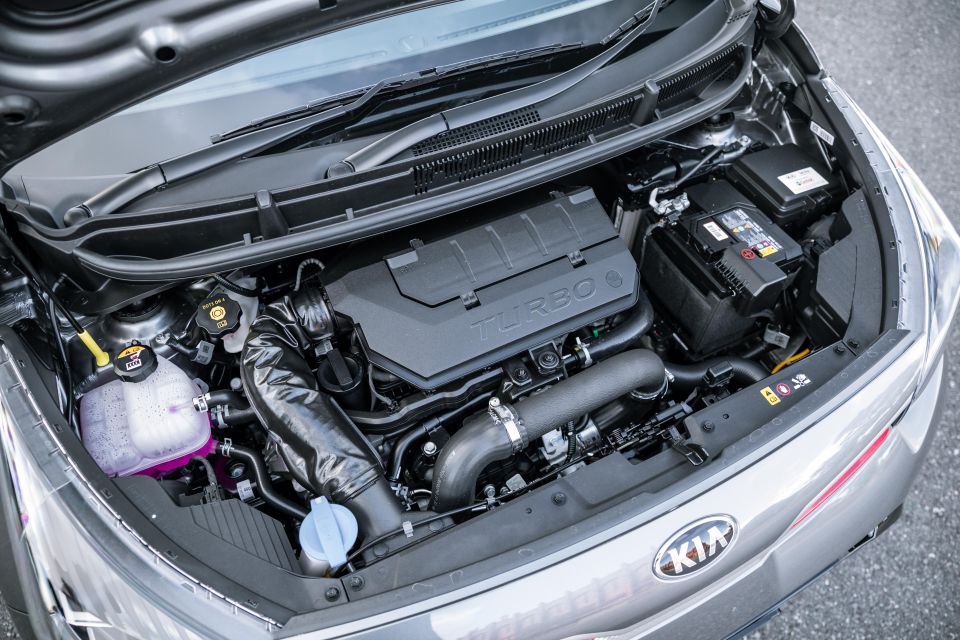
The Picanto GT has a turbocharged 1.0-litre three-cylinder engine with 74kW of power and 172Nm of torque. It’s mated exclusively to a five-speed manual in Australia.
Those figures are 12kW and 50Nm up on the base four-cylinder in the Picanto, and the GT weighs 185kg less than a Rio GT-Line with the same engine.
Over a mix of inner-city, suburban and highway driving, we averaged 5.5L/100km, extremely close to the ADR combined figure of 5.2L/100km. Over the course of a week in mostly city driving, this rose to 7.1L/100km.
The Picanto runs on 91RON regular unleaded and has a 35L fuel tank.
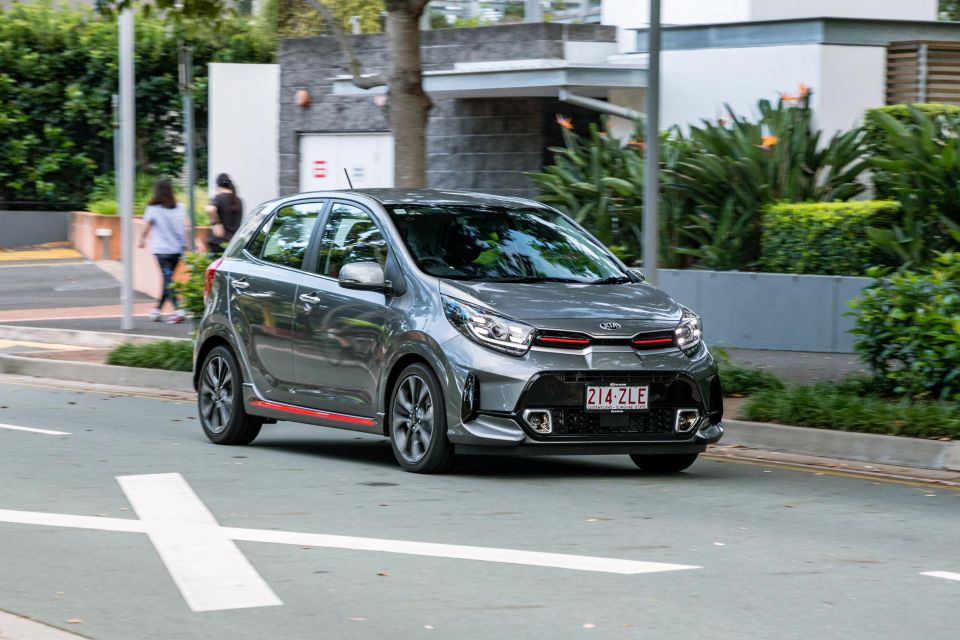
You know that feeling when you go to shake somebody’s hand and they weakly shake it back with virtually no grip? It’s a turn-off, and it’s what the Picanto’s manual transmission reminds me of.
The Picanto’s shifter action is light and vague. While throws aren’t long, there’s a ropey shift action that sometimes has you wondering whether you’ve selected the right gear.
The clutch pedal also feels overly light, though that means less of a workout for your left leg in stop/start traffic.
The ride is constantly busy and unsettled, not helped by the Picanto’s titchy 2400mm wheelbase, and you’ll notice every bump, imperfection and expansion joint.
It also has a tendency to crash over some bumps, though other road imperfections are dispatched with little impact harshness.
The steering wheel almost feels too big for the car, and it’s connected to a steering system that feels a little lifeless.
The weighting is good, being light enough for inner-city manoeuvring but heavy enough as befitting a sporty hatchback, although those in search of a proper hot hatch won’t find the last degree of connection they crave.
That’s a shame as there’s little body roll in corners and the little 195/45 R16 tyres serve up a good amount of grip.
This is a car that, on paper, should be fun to toss down a windy road and yet its detached steering, ropey shifter and light clutch pedal serve to sabotage.
Take it on the highway and put it into fifth and it sits at 2000rpm. But this is a micro car so there isn’t a great deal of sound deadening. That means the cabin is boomy, letting in a lot of road noise and tyre roar if not an egregious amount of engine noise.
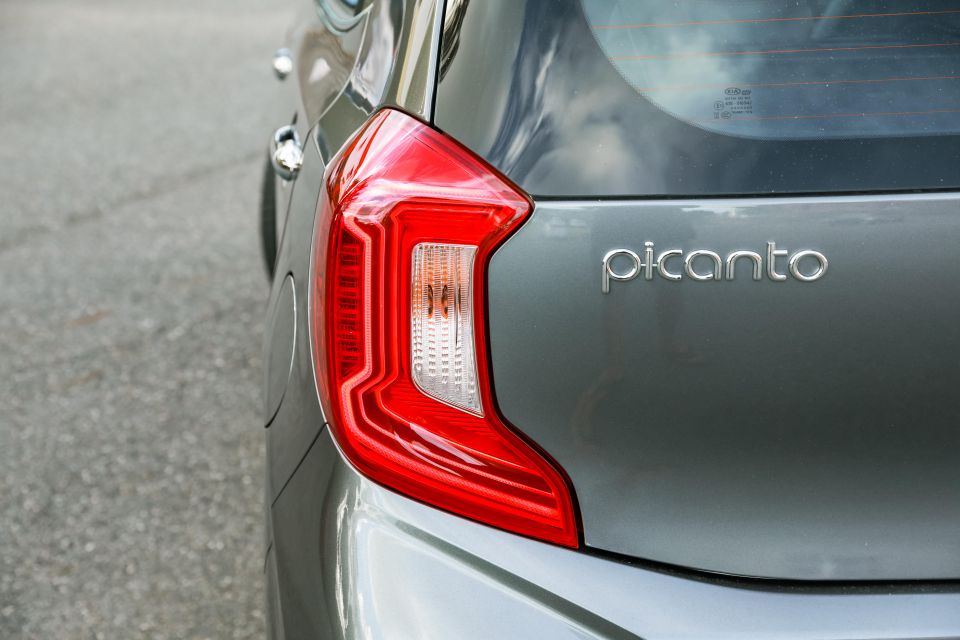
Find out more about the car
You’ll have to raise your voice if you’re speaking to someone on Bluetooth on the highway, while even something as simple as driving through rain generates a raucous din.
The engine is easily the best thing about the Picanto.
The turbo three-pot is always willing and feels flexible, yet it doesn’t shake the car like a paint-mixer either. It has an endearing, thrummy engine note and there’s always enough power on tap to dart in and out of traffic or overtake on the highway.
While we don’t expect the Picanto GT to be a hot hatch, it should offer the kind of old-school enjoyment expected of a fairly basic and lightweight hatchback with sporty pretensions and a manual transmission.
Alas, more than anything else, it’s the manual transmission that lets it down, proving not all stick shifts are created equal.
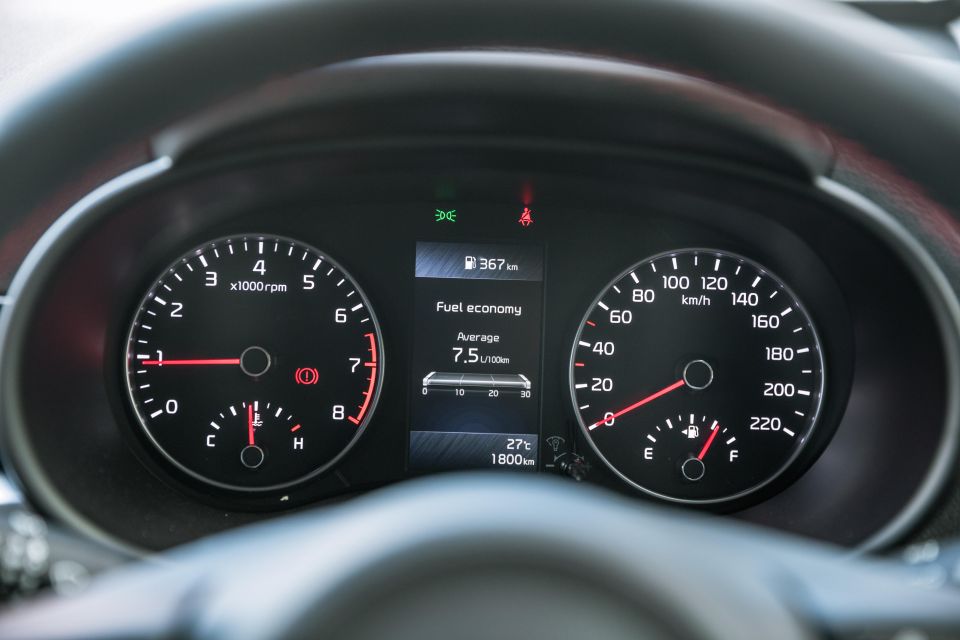
In addition to a seven-year, unlimited-kilometre warranty, Kia offers seven years of capped-price servicing.
The intervals are shorter in the GT – 12 months or 10,000km instead of 15,000km – and each service is costlier than in the S and GT-Line.
For the first seven services, you’ll pay $283, $464, $361, $493, $319, $606 and $586, or a total of $3112 and an average of $444. By comparison, the 1.25-litre Picanto costs a total of $2806 and averages $400 per service.
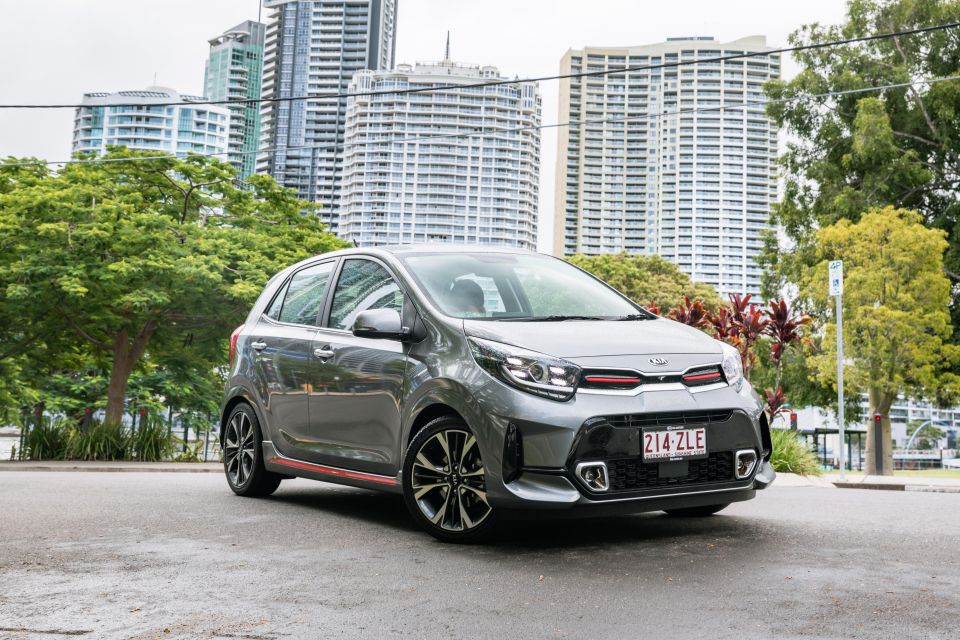
The Kia Picanto GT hits the right notes in some places, but we’d argue Kia could commit harder to the tiny-hot-hatch vibe it’s hinting at here and create a better car.
Its sporty appearance is writing a cheque its dynamics can’t cash as its delightful turbo three-pot is held back by so-so steering and a lacklustre shifter, while its stiff ride is a little too sporty for a city runabout.
The Picanto is also a car that makes more sense at the lower end of its model range, where its sharp pricing has cemented its position as the number one player in the micro car segment.
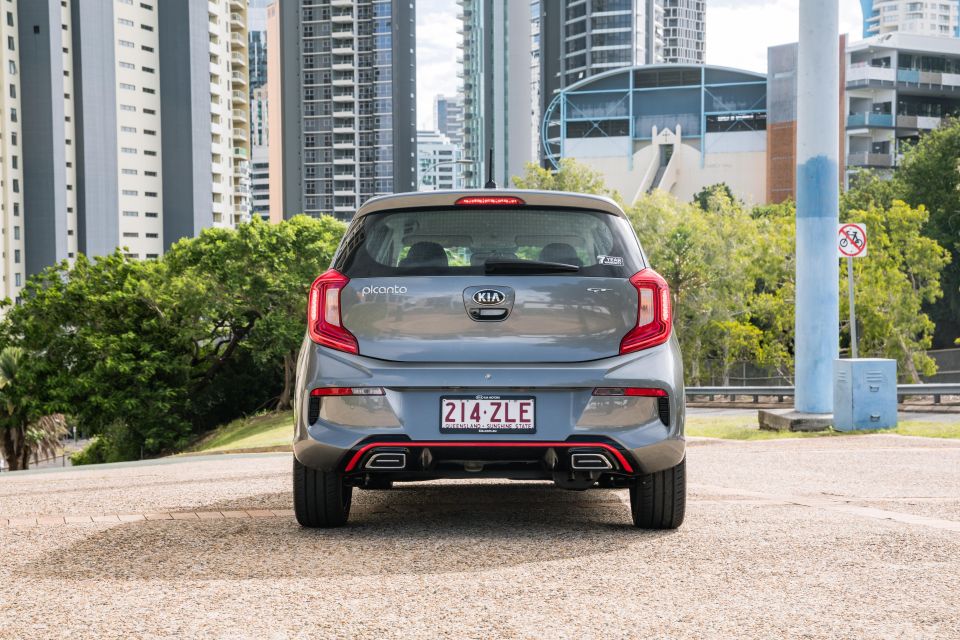
While we’re sure there are many buyers who find the Picanto’s size to be just-right and don’t want anything larger, for others it’s hard to ignore the fact this Picanto can be had for the price of rivals a segment above.
After driving the Picanto S, I had high hopes for some driving enjoyment from a refreshingly simple, sporty version of Kia’s micro car.
Alas, the Picanto GT doesn’t quite hit the target for a budget pocket rocket and narrowly misses the mark for a city runabout.
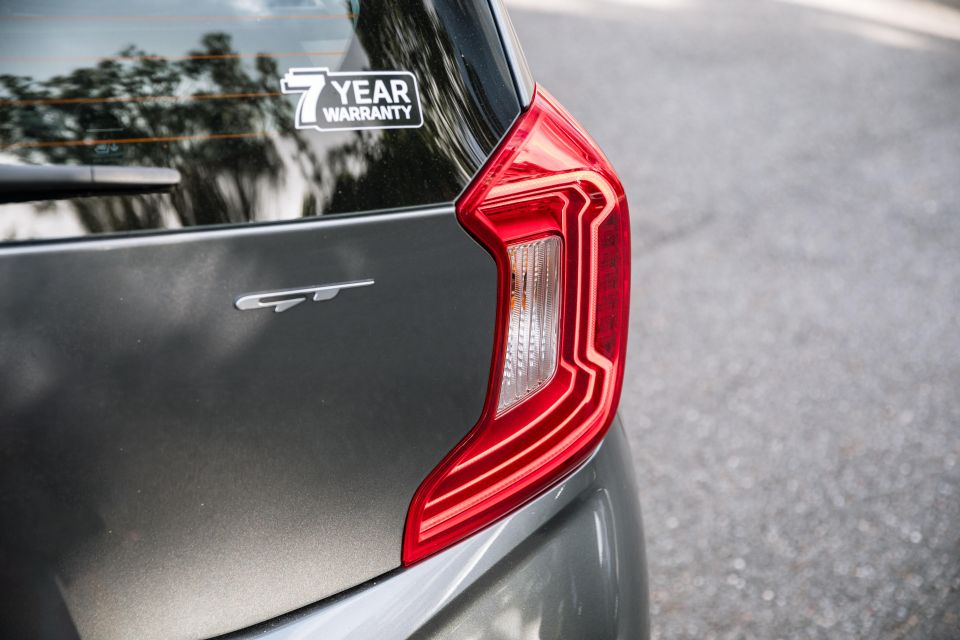
Click the images for the full gallery
Take advantage of Australia's BIGGEST new car website to find a great deal on a Kia Picanto.
William Stopford is an automotive journalist based in Brisbane, Australia. William is a Business/Journalism graduate from the Queensland University of Technology who loves to travel, briefly lived in the US, and has a particular interest in the American car industry.


Andrew Maclean
3 Months Ago
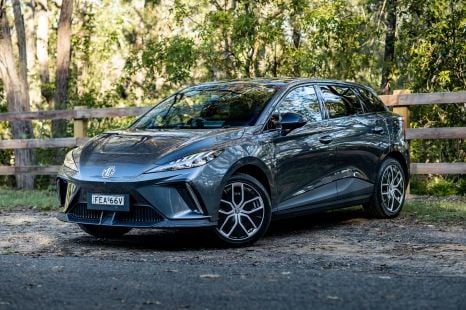

Matt Campbell
2 Months Ago
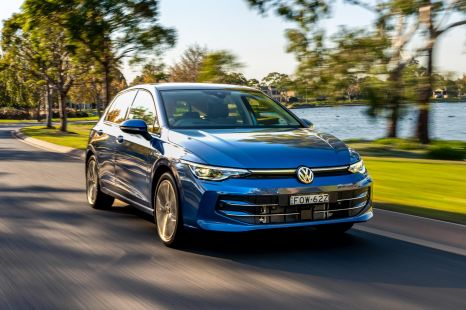

James Wong
2 Months Ago
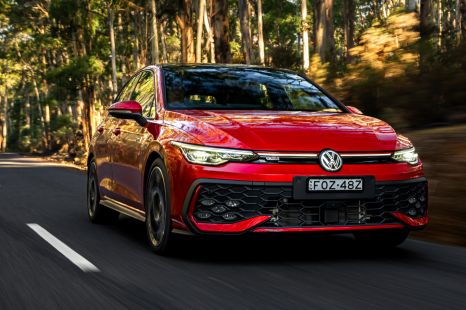

James Wong
2 Months Ago
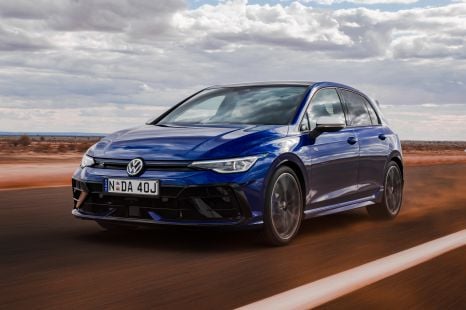

James Wong
24 Days Ago
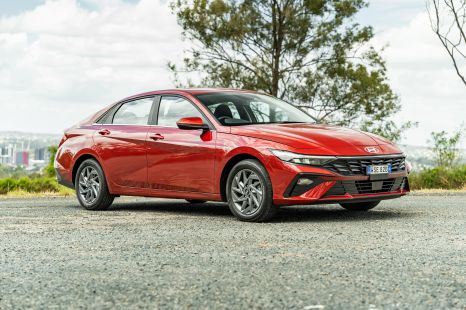

William Stopford
11 Days Ago